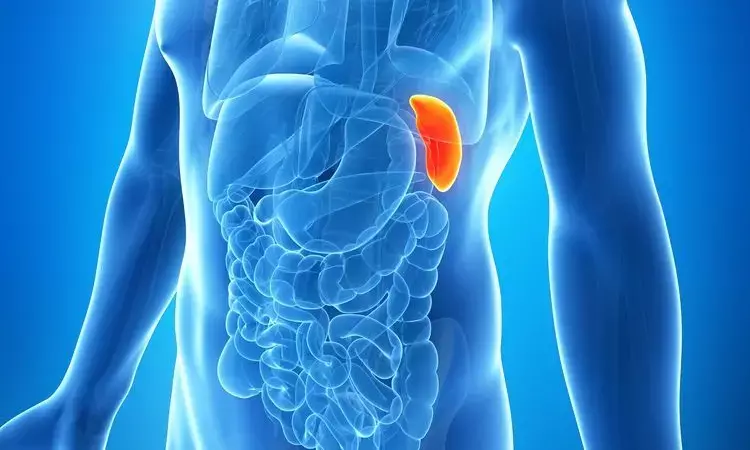- Home
- Medical news & Guidelines
- Anesthesiology
- Cardiology and CTVS
- Critical Care
- Dentistry
- Dermatology
- Diabetes and Endocrinology
- ENT
- Gastroenterology
- Medicine
- Nephrology
- Neurology
- Obstretics-Gynaecology
- Oncology
- Ophthalmology
- Orthopaedics
- Pediatrics-Neonatology
- Psychiatry
- Pulmonology
- Radiology
- Surgery
- Urology
- Laboratory Medicine
- Diet
- Nursing
- Paramedical
- Physiotherapy
- Health news
- Fact Check
- Bone Health Fact Check
- Brain Health Fact Check
- Cancer Related Fact Check
- Child Care Fact Check
- Dental and oral health fact check
- Diabetes and metabolic health fact check
- Diet and Nutrition Fact Check
- Eye and ENT Care Fact Check
- Fitness fact check
- Gut health fact check
- Heart health fact check
- Kidney health fact check
- Medical education fact check
- Men's health fact check
- Respiratory fact check
- Skin and hair care fact check
- Vaccine and Immunization fact check
- Women's health fact check
- AYUSH
- State News
- Andaman and Nicobar Islands
- Andhra Pradesh
- Arunachal Pradesh
- Assam
- Bihar
- Chandigarh
- Chattisgarh
- Dadra and Nagar Haveli
- Daman and Diu
- Delhi
- Goa
- Gujarat
- Haryana
- Himachal Pradesh
- Jammu & Kashmir
- Jharkhand
- Karnataka
- Kerala
- Ladakh
- Lakshadweep
- Madhya Pradesh
- Maharashtra
- Manipur
- Meghalaya
- Mizoram
- Nagaland
- Odisha
- Puducherry
- Punjab
- Rajasthan
- Sikkim
- Tamil Nadu
- Telangana
- Tripura
- Uttar Pradesh
- Uttrakhand
- West Bengal
- Medical Education
- Industry
Simultaneous Splenectomy Helps Overcome Small-for-Size Graft Syndrome in liver transplant cases

Small-for-size graft (SFSG) syndrome is a major cause of graft loss after living donor liver transplantation (LDLT). Researchers from the Kyushu University, Fukuoka, Japan have found that simultaneous splenectomy can be used to overcome small-for-size graft syndrome. They also found that simultaneous splenectomy improved clinical outcomes in LDLT recipients after propensity-score matching. The research has been published in the Journal of Hepatology on August 19, 2020.
Since the introduction of adult living donor liver transplantation (LDLT), graft size has become a concern, particularly for patients with chronic liver failure and/or portal hypertension. Small-for-size graft (SFSG) syndrome after LDLT remains a major complication of this procedure. Splenectomy (Spx) is an option to prevent this catastrophic complication, but its effect remains controversial. Therefore, a research team of Japan conducted a study to assess the effect of simultaneous Spx on graft function and long-term outcomes after LDLT.
It was a retrospective analysis of data from 328 patients who underwent primary adult LDLT at Kyushu University Hospital from April 2006 to June 2018. Researchers divided the patients into two following groups: those undergoing (n = 258) and those not undergoing (n = 62) prophylactic splenectomy. They performed propensity score matching (PSM) (n = 50 in each group) to overcome the selection bias and used a logistic regression model to calculate propensity scores for patients.
Key findings of the study were:
♦ After propensity score matching, the researchers found that compared with participants without splenectomy, those with simultaneous splenectomy had
• lower early graft dysfunction frequency on postoperative day 7,
• lower small-for-size graft syndrome frequency,
• lower serum total bilirubin levels.
♦ They also noted that those who underwent simultaneous splenectomy had
• lower international normalized ratio on postoperative day 14,
• lower sepsis frequency within 6months after living donor liver transplantation, and
• better graft survival rates.
♦ Upon univariate analysis, they found that not undergoing Spx (hazard ratio 3.06) was the only risk factor for graft loss after LDLT.
The authors concluded, "Simultaneous Spx may prevent SFSG syndrome and is a predictive factor for graft survival after LDLT. Simultaneous Spx is recommended when a small graft (≤35% of standard liver weight) is predicted preoperatively, or for patients with portal hypertension or high portal pressure (above 20 mmHg) after reperfusion in LDLT."
For further information:
https://www.journal-of-hepatology.eu/article/S0168-8278(20)30547-X/fulltext
Medical Dialogues Bureau consists of a team of passionate medical/scientific writers, led by doctors and healthcare researchers. Our team efforts to bring you updated and timely news about the important happenings of the medical and healthcare sector. Our editorial team can be reached at editorial@medicaldialogues.in.
Dr Kamal Kant Kohli-MBBS, DTCD- a chest specialist with more than 30 years of practice and a flair for writing clinical articles, Dr Kamal Kant Kohli joined Medical Dialogues as a Chief Editor of Medical News. Besides writing articles, as an editor, he proofreads and verifies all the medical content published on Medical Dialogues including those coming from journals, studies,medical conferences,guidelines etc. Email: drkohli@medicaldialogues.in. Contact no. 011-43720751


